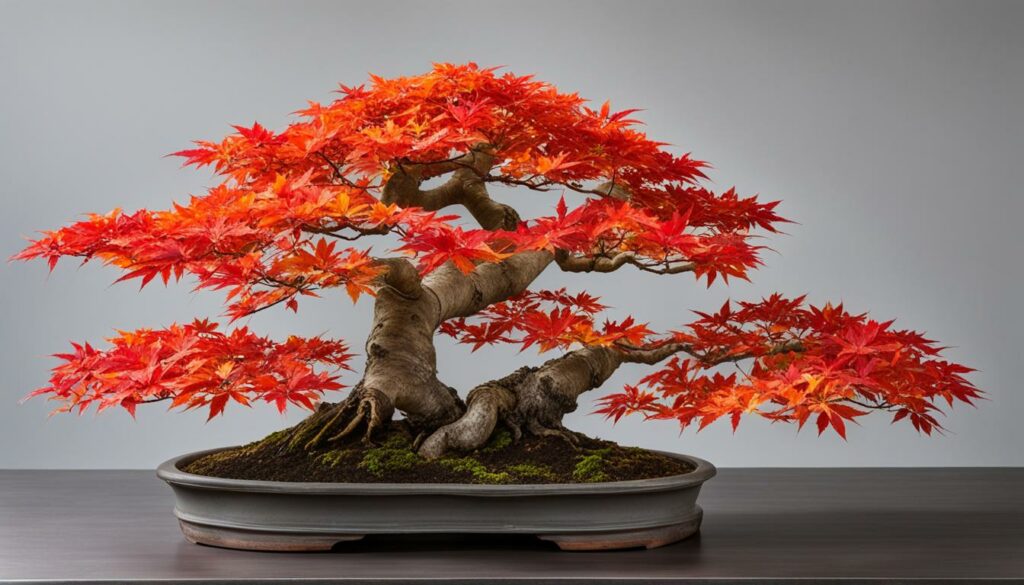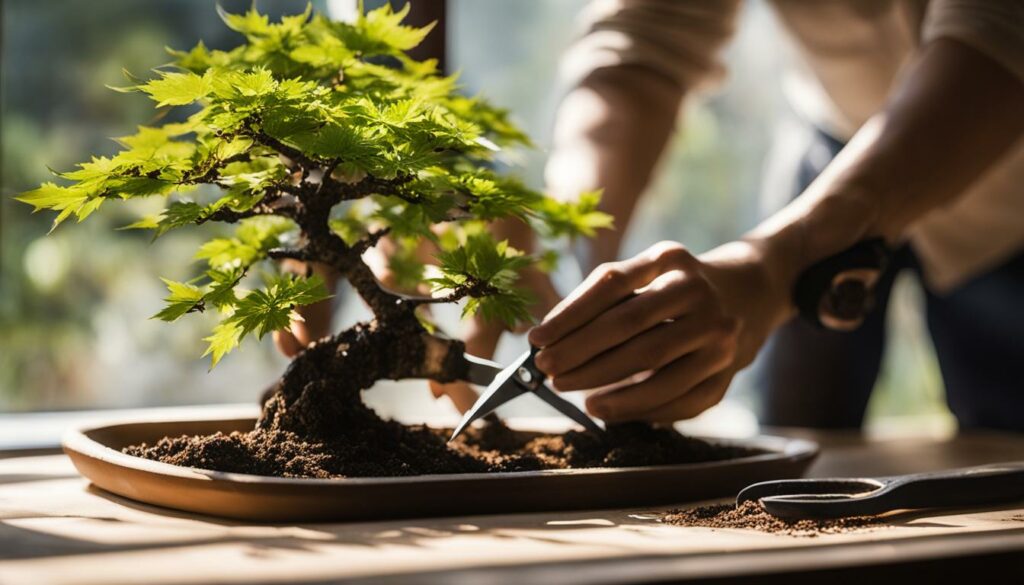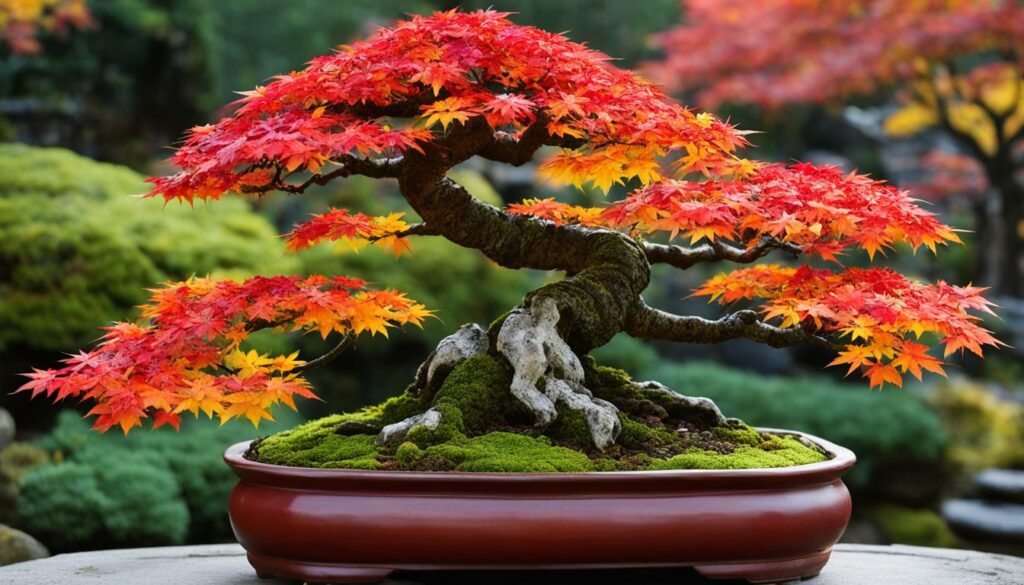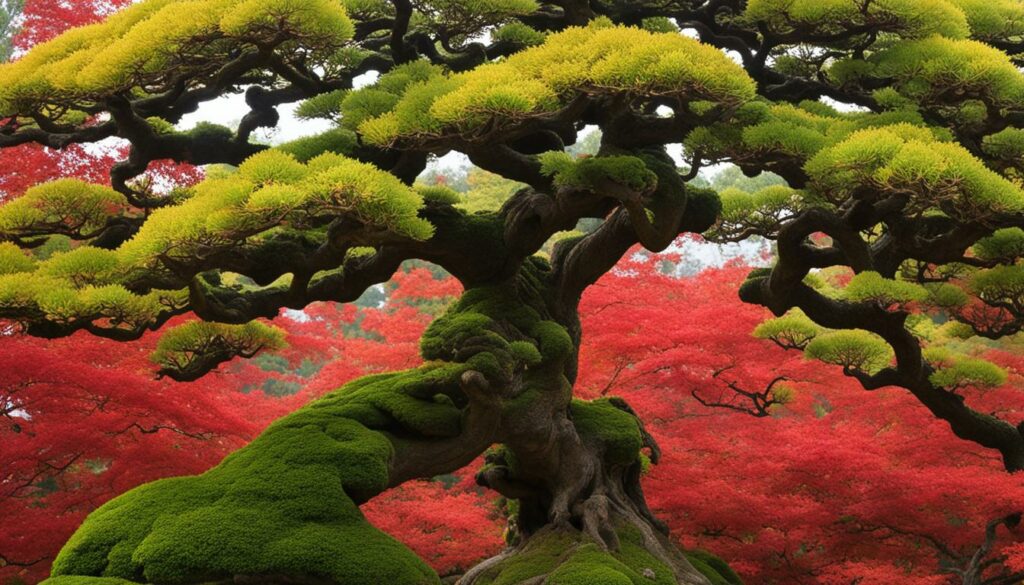Are you looking for a stunning addition to your bonsai collection? Look no further than the Bonsai Tree Species Maple. This vibrant tree boasts stunning seasonal color and is a popular choice among enthusiasts. Keep reading to discover essential tips for caring for your maple bonsai and maintaining its vivid foliage changes.
Key Takeaways:
- The Bonsai Tree Species Maple offers stunning seasonal color changes, making it a popular choice among enthusiasts.
- Proper care techniques like selecting the right soil and pot, proper watering, pruning, and fertilization are necessary for keeping your maple bonsai healthy and vibrant throughout the year.
- You can enhance the seasonal color of your maple bonsai through light exposure and temperature adjustments, as well as specialized techniques like defoliation and grafting.
- The Bonsai Tree Species Maple can become a true masterpiece with dedication and attention to detail, reflecting the beauty of nature in miniature form.
Understanding the Acer Bonsai
The acer bonsai, commonly known as the maple bonsai, is a popular choice among enthusiasts for its stunning seasonal color changes and striking appearance.
There are several types of maple trees that are commonly used for bonsai cultivation, including the Japanese Maple, the Trident Maple, and the Field Maple, among others. Each variety has its own unique characteristics and features that make it distinct from the others.
Maple bonsais require specialized care to ensure they thrive and display their characteristic seasonal colors. It’s important to provide them with the right soil mixture, which should be well-draining and contain a good balance of organic and inorganic components.

Specialized Care for Maple Bonsais
In addition to selecting the right soil, it’s crucial to monitor watering carefully, as maple bonsais are sensitive to excessive moisture. They need regular misting and temperatures that are not too hot or too cold. It’s also important to fertilize regularly during the growing season to provide optimal nutrients.
When pruning, remove dead or dying branches and focus on maintaining the balanced shape and structural integrity of the tree. This will ensure that the tree remains healthy and vibrant.
Seasonal Color Changes
The most striking aspect of the maple bonsai is its seasonal color changes, which can range from bright yellow and orange to deep red and purple. One way to enhance the color of your bonsai is to adjust its light exposure. During the fall, move the tree to a location where it receives plenty of natural sunlight to promote vibrant colors.
Another technique for enhancing color is defoliation, which involves removing the leaves of the tree in mid-summer to encourage a new, vibrant set of leaves to grow in for fall. This method should only be used on healthy, vigorous trees with a significant number of leaves.
Tip: Grafting can also be used to enhance color on maple bonsais by incorporating a branch from a different variety of maple with more vivid fall color.
By following these specialized care techniques, you can maintain the health and vibrancy of your maple bonsai and create a stunning display of seasonal color changes throughout the year.
Tips for Maple Bonsai Care
To ensure your maple bonsai remains healthy and vibrant with stunning seasonal color, it is crucial to practice proper care techniques. Keep the following tips in mind:
Soil and Pot Selection
Choosing the right soil and pot is essential for promoting healthy growth in your maple bonsai. Opt for well-draining soil with a slightly acidic pH level, such as an equal mix of peat moss and akadama. Choose a pot that is appropriate for the size of your bonsai, allowing enough room for roots to grow but not too much additional space.
Watering
Watering is a critical factor in the care of your maple bonsai. It is essential to keep the soil consistently moist but not too wet, as over-watering can lead to root rot. Water your bonsai thoroughly and allow excess water to drain out of the pot.
Pruning and Fertilization
Regular pruning and fertilization are necessary to maintain the health and shape of your maple bonsai. Use specialized pruning shears to trim away any dead or overgrown branches, as well as to shape your bonsai to your desired style. Fertilize your bonsai with a balanced, slow-release fertilizer every 4-6 weeks during the growing season to provide the necessary nutrients for healthy growth.
Seasonal Care
During the winter months, it is essential to protect your maple bonsai from freezing temperatures and harsh winds. Consider bringing it indoors or keeping it in a sheltered area. In the summer months, it is important to monitor the amount of direct sunlight your bonsai is receiving, ensuring it receives the necessary amount for growth and color but not too much exposure.
With the right care and attention, your maple bonsai can thrive with stunning seasonal color changes. Don’t hesitate to seek expert advice or guidance from trusted resources to ensure the best care for your bonsai.

Enhancing Seasonal Color in Maple Bonsai
Maple bonsai trees are known for their breathtaking seasonal color changes that can add a touch of beauty and vibrancy to any space. However, with the right techniques, you can enhance the color changes and create an even more captivating display.
Adjusting Light Exposure and Temperature
The amount of light and temperature your bonsai receives can greatly impact its foliage color changes. To enhance the red and orange hues in the fall, gradually reduce the amount of light your maple bonsai receives for a few weeks leading up to the season. You may also consider moving your bonsai to a cooler location to encourage the color change.
Utilizing Defoliation
Defoliation is a technique used to remove the leaves of your maple bonsai before they turn color. This encourages the growth of new leaves, which will display more vibrant and colorful foliage once they change. It is important to defoliate your bonsai at the right time, during the growing season and after a full flush of leaves has developed.
Grafting Techniques
Grafting is a technique used by experts to enhance the seasonal color changes of their maple bonsai trees. By grafting branches from a different tree to your bonsai, you can create a unique blend of contrasting colors that will make your bonsai truly stand out. It is essential to consult with a professional before attempting any grafting techniques to ensure the health and longevity of your maple bonsai.
By implementing these tips for enhancing seasonal color in your maple bonsai tree, you can create a stunning display of vibrant and captivating foliage. With dedication and attention to detail, your maple bonsai can become a true masterpiece, reflecting the beauty of nature in miniature form.

Conclusion
In conclusion, the Bonsai Tree Species Maple is a stunning addition to any space, offering striking seasonal colors and captivating foliage changes. Proper care techniques are crucial to maintaining the health and beauty of your maple bonsai. Remember to select the right soil and pot, water and fertilize appropriately, and prune regularly to encourage healthy growth.
By utilizing specialized techniques such as defoliation and grafting, you can enhance the colors and patterns of your maple bonsai and create a truly unique masterpiece. With your dedication and attention to detail, your bonsai tree species maple can thrive and bring the beauty of nature into your home or office.
Thank you for taking the time to learn more about maple bonsai care and seasonal changes. We hope this article has provided you with valuable insights that will help you create a beautiful and vibrant maple bonsai that you can enjoy for years to come.
FAQ
Why should I choose a maple bonsai tree?
Maple bonsai trees are popular due to their striking and vibrant seasonal color. These trees offer a stunning display of foliage changes, ranging from vibrant greens in the spring and summer to magnificent reds, oranges, and yellows in the fall. Maple bonsais also have beautifully textured leaves and elegant branching patterns, making them a captivating choice for any bonsai enthusiast.
What are some popular types of maple trees used for bonsai cultivation?
One of the most popular varieties of maple trees used for bonsai cultivation is the Japanese Maple (Acer palmatum). This tree is cherished for its delicate leaves that come in a wide range of colors, including vivid reds, oranges, and yellows. Other commonly used maple species include Trident Maple (Acer buergerianum) and Field Maple (Acer campestre), both known for their vibrant foliage and adaptability to bonsai cultivation.
How do I care for a maple bonsai tree?
Caring for a maple bonsai involves several key steps. It is essential to provide the right environment, such as placing the tree in a location with filtered sunlight and protecting it from extreme temperatures. Proper watering is crucial, making sure the soil is moist but not waterlogged. Regular pruning and shaping help maintain the tree’s aesthetic form, and fertilization provides essential nutrients. Additionally, repotting every few years ensures proper root health and development.
How can I enhance the seasonal color changes in my maple bonsai?
To enhance the seasonal color changes in your maple bonsai, you can implement a few techniques. Adjusting the light exposure to provide the optimal amount of sunlight can help intensify the coloration. Managing temperature fluctuations by protecting the tree from harsh cold or extreme heat can also influence the foliage’s vibrancy. Additionally, techniques such as defoliation, which involves removing the leaves during the growing season to encourage new growth, and grafting, which allows you to incorporate desirable traits from other maple varieties, can contribute to enhancing the seasonal color of your bonsai.
Can I keep my maple bonsai indoors?
While maple bonsai trees thrive best outdoors, certain maple varieties can tolerate indoor conditions as long as their specific requirements are met. Japanese Maples, for example, can be kept indoors but need ample sunlight, humidity, and proper temperature regulation. If you choose to keep your maple bonsai indoors, ensure it receives sufficient natural light and consider using supplemental grow lights if needed. It is crucial to regularly monitor the tree’s health and make adjustments as necessary to provide the optimal conditions for growth.


